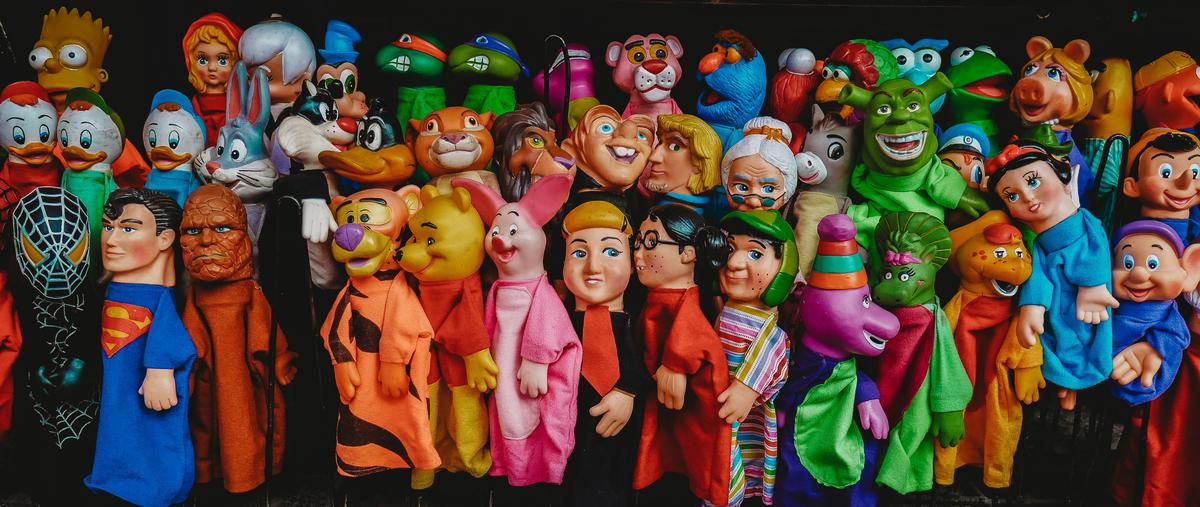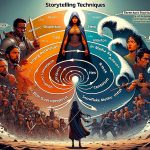When we step into the world of storytelling, whether it’s through a book or a movie, what truly captivates us is less about the setting or plot but more about the people we meet along the way – the characters. Character development stands as a fundamental pillar in creating stories that resonate deeply with audiences. This article aims to explore the essence of character development, revealing its undeniable significance in weaving narratives that not only entertain but also remain with us long after the story has ended.
Understanding the Basics of Character Development
Why is Character Development Crucial in Storytelling?
Imagine diving into a book or movie and finding yourself completely hooked. What usually grabs your attention? While a twisty plot and stunning visuals do their part, it’s often the characters who steal the show. That’s because character development is the heart of storytelling, shaping not just the individuals in the story but the entire narrative itself. Let’s unwrap this concept and see why it’s so central to crafting unforgettable tales.
At its core, character development refers to the journey characters undergo throughout a story, evolving in response to their experiences and choices. It’s what makes characters relatable, transforming them from mere names on a page to vivid, living beings we root for, or in some cases, love to hate. Without this evolution, stories would fall flat, lacking the emotional depth that engages readers or viewers on a deeper level.
One major reason character development is crucial is because it builds empathy. When characters face challenges, make tough choices, or grow from their experiences, it mirrors our own lives. We see ourselves in their struggles and triumphs, making it easier to connect with them on a personal level. This connection is what keeps audiences invested, eagerly flipping pages or binge-watching episodes to find out what happens next.
Moreover, character development drives the plot forward. Characters’ decisions often result in consequences that shape the story’s direction, creating a dynamic flow of events. Imagine your favorite thriller without the protagonist’s growth from a naive newbie into a seasoned survivor. The plot would lose its momentum, reducing suspense to a mere series of events with no emotional stakes involved.
Diverse character arcs also enrich the narrative, offering multiple perspectives and layers to the story. From the hero’s journey to redemption arcs, these varied paths ensure that there’s something for everyone. They introduce complexity, avoiding a one-dimensional tale and instead weaving a tapestry of human experience that resonates with a broad audience.
Character development isn’t just about the protagonist. Supporting characters also play a pivotal role, contributing to the main character’s journey and the story’s richness. Through interactions with secondary characters, protagonists can unveil hidden facets of their personality or face challenges that spur growth, adding layers to the narrative fabric.
Here’s the bottom line: character development is the backbone of compelling storytelling. It transforms a simple narrative into an immersive experience, where characters leap off the page or screen and into our lives. By fostering emotional connections, driving the plot, and adding depth and complexity, it ensures that stories not only entertain but also endure. After all, it’s the characters we remember long after the final scene fades or the last page turns, proving just how vital character development is to the art of storytelling.

Crafting Believable and Relatable Characters
Creating characters that resonate with readers isn’t just about crafting a bio or listing traits. It’s about breathing life into the pages and making your characters so real, readers forget they’re fiction. So, how do we, as writers, achieve this? Let’s dive into some strategies that make characters leap off the page.
Make Them Relatable
First off, relatable characters are the golden ticket. Now, this doesn’t mean your protagonist needs to live a run-of-the-mill life. Far from it. Relatability comes from emotions, reactions, and the decisions your characters face. Whether it’s the joy of a small victory, the weight of a tough decision, or the pain of loss, these are feelings we’ve all encountered. When your character navigates these universal experiences, readers see a bit of themselves.
Give Them Flaws
Perfect is boring. There, I said it. Characters need flaws just like real people. It’s their imperfections that make them intriguing and relatable. Maybe your hero is a bit too stubborn, or your villain has a soft spot for old jazz records. These quirks, these weaknesses, make characters multidimensional and give readers a reason to root for them—or love to hate them.
Let Them Grow
Growth is crucial. A character who ends the story the same way they started isn’t just stagnant; they’re a missed opportunity. Readers invest in characters who evolve, learn from their mistakes, and overcome obstacles. This journey of personal growth doesn’t just add depth to your character; it’s often the heart of the story itself.
Dialogue Matters
What your characters say and how they say it reveals a lot. Dialogue is a powerful tool for showcasing personality, background, and even the dynamics between characters. Authentic dialogue resonates. It pulls readers deeper into the story and makes characters feel like living, breathing people you could chat with over coffee.
Conflict is Key
Conflict isn’t just about external struggles; it’s the internal battles that truly shape a character. These challenges force your characters to confront their fears, question their beliefs, and ultimately, show what they’re made of. It’s through these struggles that characters become memorable, their victories sweeter, and their losses more poignant.
Backstories Add Depth
Knowing where your characters come from sets the stage for understanding their motivations, desires, and fears. While not every detail of a character’s backstory needs to be revealed, having a well-thought-out history informs their actions and choices, enriching the narrative fabric of your story.
Interactions Build Connections
Finally, characters don’t exist in a vacuum. Their relationships with others add layers of complexity and provide opportunities to reveal different facets of their personality. Through love, friendship, rivalry, or enmity, these interactions forge connections with readers, making the characters’ journeys all the more compelling.
In wrapping up, creating characters that resonate with readers is about making them authentic, relatable, and dynamic. Through their flaws, growth, and the relationships they navigate, characters become the soul of your story. These are the figures readers will cheer for, cry over, and, long after closing the book, remember.

Photo by alison_wang on Unsplash
Dialogue and Interactions in Character Development
In the world of storytelling, dialogue isn’t just a way for characters to communicate; it’s a bridge that connects the audience to the heart and mind of each character. It’s through these spoken exchanges that we come to understand who a character is, what they want, and why. Let’s peel back the layers and see how dialogue plays its pivotal role in shaping a character.
First off, dialogue sets the tone of a character. Just by listening to how a character speaks, we can pick up clues about their background, personality, and even their current mood. A character’s choice of words, their accent, and the rhythm of their speech bring out unique traits. For instance, a character who uses complex vocabulary could be seen as educated or even pretentious, while another who speaks in a laid-back manner may come across as easy-going or lackadaisical.
Beyond just tone, dialogue reveals a character’s intentions and desires. When a character articulates what they want, it does more than just tell us their goals—it shows us what motivates them. This is where we see the intersection of desires and actions, pushing the narrative forward. Think about a scene where a character confesses their dream of becoming an artist against their family’s wishes. This moment of vulnerability turns their internal conflict into something tangible for the audience.
Dialogue also serves as a mirror for a character’s evolution. As a story unfolds, the way a character speaks and what they talk about can change significantly, reflecting their growth. A character might start a journey speaking with uncertainty or fear and, through various trials, begin to speak with confidence and determination. This transformation, marked by dialogue, makes the character’s development clear and gratifying for the audience.
Conflict, the lifeblood of any narrative, frequently unfolds through dialogue. It’s where clashes of ideology, misunderstandings, and confrontations come to the forefront. Through heated exchanges or cold words, dialogue can lay bare the tensions between characters. It’s in these fiery or frosty interactions that we see true personalities shine. Whether it’s a protagonist standing up to a villain or a heated debate between allies, these dialogues shape our perception of the characters involved.
Lastly, dialogue isn’t just about what is said; it’s also about what’s left unsaid. Subtext, the underlying message or intent behind words, can be a powerful tool in character development. A character might say one thing but mean another, revealing secrets, lies, or true feelings only hinted at. This layer of complexity adds depth, making characters and their relationships feel more real and multifaceted.
In essence, dialogue is a multifunctional tool in the writer’s arsenal, capable of building bridges between the characters and the audience. Through what characters say, how they say it, and what they choose not to say, dialogue shapes characters in rich and nuanced ways. It helps paint a fuller picture of who these characters are, where they’ve been, and, most importantly, where they’re going on their journey.

Character Development through Conflict and Resolution
Why is Conflict Essential to Character Development?
Imagine you’re following the journey of a character who has everything: good looks, great friends, and a trouble-free life. Sounds pretty dull, right? That’s because without conflict, there’s no story to tell, and more importantly, no character development. So, let’s dive into why conflict isn’t just a plot device but a crucial tool for shaping compelling characters.
First off, conflict acts as the gym for character muscles. Just like you need resistance to build strength, characters need challenges to grow. When faced with obstacles, characters are pushed out of their comfort zones. This doesn’t just make for an interesting read but also allows us to see what these characters are made of. Are they resilient? Do they crumble under pressure or rise to the occasion? Through conflict, static characters can evolve into memorable heroes (or sometimes, villains).
Another critical aspect is decision-making. Life is full of tough choices, and so are good stories. When characters encounter conflict, they’re forced to make decisions. These moments are golden for readers because they reveal a character’s values, priorities, and motivations. Every choice a character makes in the face of difficulty peels back another layer, offering deeper insight into their psyche. This is where characters become more than names on a page; they become reflections of human nature.
Conflict also serves as a mirror reflecting a character’s flaws. Nobody’s perfect, and it’s our imperfections that make us relatable. When characters clash with others or face hurdles, their flaws bubble to the surface. Maybe it’s a temper they can’t control or a fear they struggle to overcome. These imperfections not only add depth but also create an opportunity for growth and personal transformation. Watching a character overcome their faults can be as thrilling as any external adventure.
Let’s not forget the role of conflict in shaping relationships. Conflict can act as both a wedge and a glue in character dynamics. It tests bonds, revealing the strength of relationships. Allies might become foes, or enemies might find common ground. Through these trials, the interactions between characters grow richer and more complex. The way characters react to each other under stress adds layers of intrigue to their relationships, making the story’s social fabric as engaging as its plot.
In essence, conflict is the forge in which character development is hammered out. It exposes, challenges, and ultimately, transforms characters, making their journeys gripping and emotionally resonant. Without conflict, characters remain on the surface level, and their stories lack the depth and dynamism that make them truly unforgettable. So, the next time you’re following a character through their trials and tribulations, remember that every challenge they face is a step towards making them the multi-faceted figures that capture our hearts and minds.

As we wrap up our exploration of character development, it’s clear that this aspect of storytelling is not just a tool but the very soul that breathes life into a narrative. It’s what transforms simple tales into rich, memorable experiences that echo in our hearts and minds. Through the growth and evolution of characters, stories acquire depth, empathy, and a genuine connection with the audience. It is evident that the art of storytelling thrives on the intricate development of its characters, ensuring that each story, no matter how varied its plot, is grounded in the universal language of human experience.






